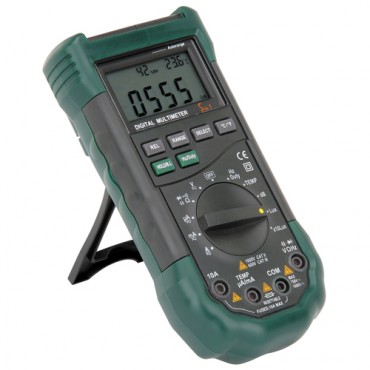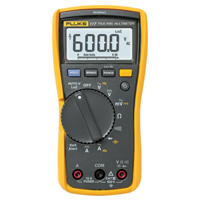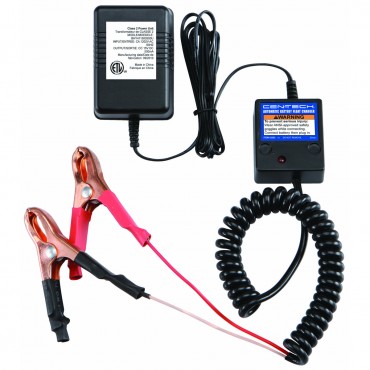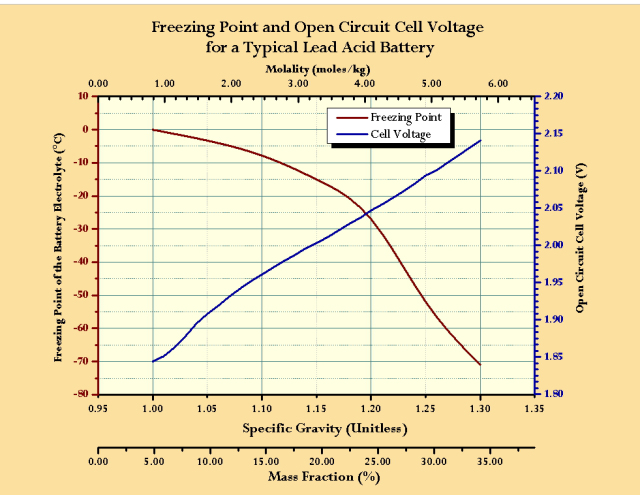You are using an out of date browser. It may not display this or other websites correctly.
You should upgrade or use an alternative browser.
You should upgrade or use an alternative browser.
Trickle charger
- Thread starter busterrm
- Start date
mathd
solid fixture here in the forum
Yep, thats what i said somewhere in my first post. but it can be fun to build, and inexpensive if he can source the parts from trashed electronic"scratch building".busterrm said:Heck, harbor freights has a battery tender for 10 bucks.
But its time consuming, make a good lobby
there is other easier way to make it with less component and cheaper too.
I mean, if he Rick has a .25amp charging current, that cool, its a charger (not a safe trickle charger) and can not be run all day long.(just make sure of your output voltage to make sure its high enough to be charging)
Yourself bob, could just have a 10ohm resistor 3watt or more in serie that set it for about 400ma current. that will be fine for a cheap trickle charger. but with 16volt out, am not sure it will do good. or find a unregulated 12v wall wart that output 13v~ dc when loaded (or ac just add one diode in serie with the resistor)
but i dont like this design and would not use it.
edit: The one your using is 16V regulated. not 12v unregulated. the voltage will not drop to 13volt when "loaded"
The resistor will drop that voltage anyway so its about the same thing, am not really into battery so thats why i dont know if its ok or not.
Anyway it is what it is, a very cheap design.(probably like most trickle charger)
viewtopic.php?f=70&t=2133&p=33451&hilit=trickle#p33451

http://www.harborfreight.com/5-in-1-dig ... 98674.html

having a fluke multi meter, or at least a functioning multi meter, and an assortment of test leads helps
your battery charger should put out about 13.7 volts until the battery reaches at least 12.2 volts then drop back to about 12.7 volts then intermittently cycle,on and off any time the battery drops much below 12.4 volts.
HF $5 trickle chargers, are meant to maintain a fully charged voltage in a battery , not re-charge a battery, WON,T CHARGE A DEAD BATTERY BUT THEY WILL GENERALLY KEEP ONE FROM GOING DEAD , at least for a few months, if the cars not used,they work reasonably well WHEN THEY WORK, and IVE had a few of them work for years ,but most crap out and fail in a few months, you simply check with a multi meter when its hooked to a battery thats measuring under 12 volts,and if its not putting out any voltage it goes in the trash even if the little red light works, at $5 each on sale you buy several and if each works for 4-6 months and occasionally one works for years your really not out much.

http://www.harborfreight.com/automatic- ... 69955.html
VIDEO TO WATCH
BTW IF YOUR GOING TO STORE THE CAR OVER THE WINTER IN AN UNHEATED GARAGE....read the linked info below
http://mathscinotes.wordpress.com/2013/ ... zing-math/
https://www.grainger.com/product/NOCO-Automatic-Manual-Battery-Charger-417Y61
How long does it take to charge a battery?
The more discharged that a battery is, then the longer it will take to recharge it. Usually it takes several hours to effectively recharge a battery.
If a battery is very discharged then it can take up to 12 hours or more to recharge it. Whilerecharging a battery, if the battery becomes hot when you touch it then stop charging it.
Slow charge: It is best to slow charge the battery. Slow charging rates vary depending on the battery's type and capacity. However when charging an automotive battery, 10-amps or less is considered a slow charge while 20-amps or above is generally considered a fast charge.
Fast charge: Repeated fast charges on a battery may overcharge a battery and reduceservice life.
Step 1: Determine how long to recharge a battery by calculating how much capacity your battery has. For example, an Interstate battery with the part number MT-34 has 120 minutes reserve capacity. In order to calculate the amount of amp-hours in a battery, the rule of thumb method is to multiply the reserve capacity by 0.6. In the case of a MT-34, 120 minutes reserve capacity multiplied by 0.6 = approximately 72 amp-hours (at the 20-hour rate).
Step 2: Use a voltmeter to measure the remaining voltage in the battery. For example, if the voltmeter shows a voltage reading of 12.4 volts then the battery is approximately only 50% charged. Since the battery is 50% charged, then this means that there are approximately half of the 72 amp-hours in the battery. Therefore it is necessary to put about 36 amp hours plus 15% more to compensate for the internal resistance in the battery for a total of 36 amps + 36 x 0.15 = around 42 amp-hours back into the battery.
Step 3: Charge the battery at a 10-amp rate. 42 amp-hours needed by the battery divided by 10 amp charge = it will take around 4-1/2 hours to recharge the battery. (The best charger to use in order to charge a car battery is a 3-stage automatic 12 volt /10amp charger.) However, the charger really doesn't output the entire 10 amps during the chargecycle because it automatically limits the voltage and the amperage during the charge cycle. You may actually only see about 1/2 the output over the time period that you are actually charging the battery. For that reason, it can easily take 9 hours or more to fully recharge the battery. Even after 9 hours, because of the reduced voltage, the battery may require more charging to get it 100% charged.
Step 4: Use a voltmeter or, better, check the cells with a hydrometer to make sure the battery is fully charged.

http://www.harborfreight.com/5-in-1-dig ... 98674.html

having a fluke multi meter, or at least a functioning multi meter, and an assortment of test leads helps
your battery charger should put out about 13.7 volts until the battery reaches at least 12.2 volts then drop back to about 12.7 volts then intermittently cycle,on and off any time the battery drops much below 12.4 volts.
HF $5 trickle chargers, are meant to maintain a fully charged voltage in a battery , not re-charge a battery, WON,T CHARGE A DEAD BATTERY BUT THEY WILL GENERALLY KEEP ONE FROM GOING DEAD , at least for a few months, if the cars not used,they work reasonably well WHEN THEY WORK, and IVE had a few of them work for years ,but most crap out and fail in a few months, you simply check with a multi meter when its hooked to a battery thats measuring under 12 volts,and if its not putting out any voltage it goes in the trash even if the little red light works, at $5 each on sale you buy several and if each works for 4-6 months and occasionally one works for years your really not out much.

http://www.harborfreight.com/automatic- ... 69955.html
VIDEO TO WATCH
http://mathscinotes.wordpress.com/2013/ ... zing-math/
https://www.grainger.com/product/NOCO-Automatic-Manual-Battery-Charger-417Y61
short answer, the rate a battery looses its charge depends on the design and capacity but after about 2 weeks without a trickle charger is usually pushing expectations, with a trickle charger 2-3 years is commonlink said:Lead-acid batteries contain a solution of sulfuric acid (H2SO4) and water — the solution is referred to as the battery’s electrolyte. Adding a solute (in this case, H2SO4) to a solvent (in this case, H2O) will lower the freezing point of a solution. A fully charged battery has more H2SO4 than a discharged battery. The additional H2SO4 depresses the freezing point of the batteries electrolyte to around -70 °C. This is a temperature we do not see in Minnesota. However, a discharged battery’s freezing point rises to ~-10 °C. Unfortunately, the temperature in Minnesota frequently drops below -10 °C.

How long does it take to charge a battery?
The more discharged that a battery is, then the longer it will take to recharge it. Usually it takes several hours to effectively recharge a battery.
If a battery is very discharged then it can take up to 12 hours or more to recharge it. Whilerecharging a battery, if the battery becomes hot when you touch it then stop charging it.
Slow charge: It is best to slow charge the battery. Slow charging rates vary depending on the battery's type and capacity. However when charging an automotive battery, 10-amps or less is considered a slow charge while 20-amps or above is generally considered a fast charge.
Fast charge: Repeated fast charges on a battery may overcharge a battery and reduceservice life.
Step 1: Determine how long to recharge a battery by calculating how much capacity your battery has. For example, an Interstate battery with the part number MT-34 has 120 minutes reserve capacity. In order to calculate the amount of amp-hours in a battery, the rule of thumb method is to multiply the reserve capacity by 0.6. In the case of a MT-34, 120 minutes reserve capacity multiplied by 0.6 = approximately 72 amp-hours (at the 20-hour rate).
Step 2: Use a voltmeter to measure the remaining voltage in the battery. For example, if the voltmeter shows a voltage reading of 12.4 volts then the battery is approximately only 50% charged. Since the battery is 50% charged, then this means that there are approximately half of the 72 amp-hours in the battery. Therefore it is necessary to put about 36 amp hours plus 15% more to compensate for the internal resistance in the battery for a total of 36 amps + 36 x 0.15 = around 42 amp-hours back into the battery.
Step 3: Charge the battery at a 10-amp rate. 42 amp-hours needed by the battery divided by 10 amp charge = it will take around 4-1/2 hours to recharge the battery. (The best charger to use in order to charge a car battery is a 3-stage automatic 12 volt /10amp charger.) However, the charger really doesn't output the entire 10 amps during the chargecycle because it automatically limits the voltage and the amperage during the charge cycle. You may actually only see about 1/2 the output over the time period that you are actually charging the battery. For that reason, it can easily take 9 hours or more to fully recharge the battery. Even after 9 hours, because of the reduced voltage, the battery may require more charging to get it 100% charged.
Step 4: Use a voltmeter or, better, check the cells with a hydrometer to make sure the battery is fully charged.
Last edited by a moderator:
mathd
solid fixture here in the forum
I forgot, if you want to measure the current its putting into your battery(since your Voltmater do not have the current function) again, just measure the voltage drop across the resistor. divide it by the value of your resistor that will give you the current your charging your battery with.
8
87vette81big
Guest
This past week a semi local car collector lost all 7 of his classic cars & trucks from 1932 to 1977.
An inside Fire in A Metal workshop Mortan building.
Had a few for 60 years. All restored. Total loss.
Burnt to the ground.
Wondering if homemade battery trickle chargers at fault.
An inside Fire in A Metal workshop Mortan building.
Had a few for 60 years. All restored. Total loss.
Burnt to the ground.
Wondering if homemade battery trickle chargers at fault.
mathd
solid fixture here in the forum
To make this circuit safe for continuous charging(real safe trickle charger for ACID battery) you need the battery self-discharge rate + the leaking current your car has  .(but then, your battery need to be fully charged)
.(but then, your battery need to be fully charged)
Maby, i was never a fan of trickle charger homemade or not.87vette81big said:This past week a semi local car collector lost all 7 of his classic cars & trucks from 1932 to 1977.
An inside Fire in A Metal workshop Mortan building.
Had a few for 60 years. All restored. Total loss.
Burnt to the ground.
Wondering if homemade battery trickle chargers at fault.
8
87vette81big
Guest
I think it needs to be short circuit safe.
Current kickoff device.
Or AC induction transformer type.
Primary winding of high impedance. That limits input line current & internal heat generated if secondary step down voltage is short circuited accidentally.
Current kickoff device.
Or AC induction transformer type.
Primary winding of high impedance. That limits input line current & internal heat generated if secondary step down voltage is short circuited accidentally.
